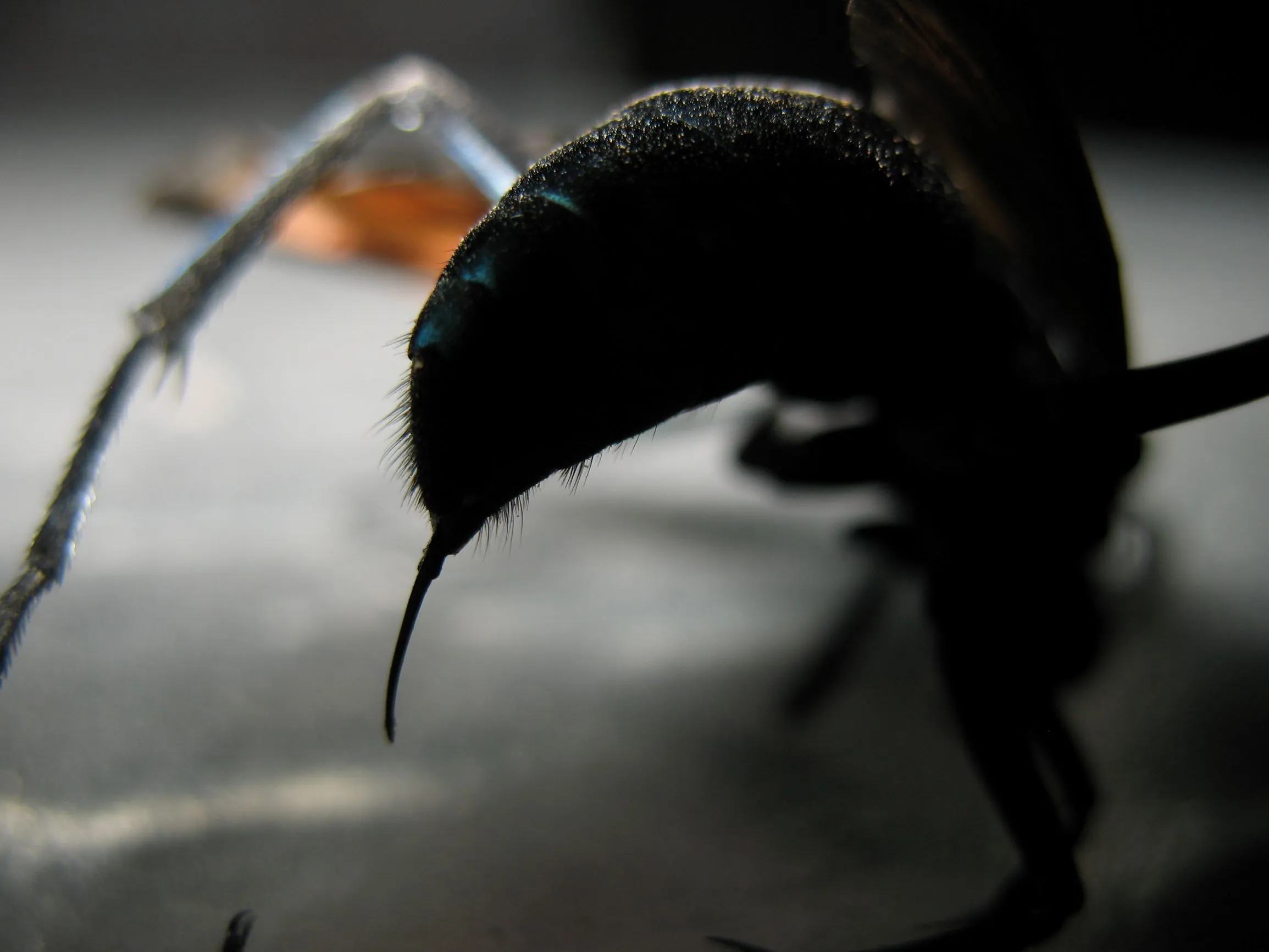The Exquisite Anatomy of the Tarantula Hawk
The tarantula hawk, a remarkable species of spider wasp, is a testament to the wonders of natural design. Its anatomy is exquisitely adapted for a life of predation, specifically targeting tarantula spiders. This wasp’s physical characteristics are not only impressive but also essential to its survival. From the powerful sting used for subduing prey to the intricate sensory organs that navigate its environment, every part of its anatomy plays a crucial role. Understanding the tarantula hawk’s anatomy provides insight into the remarkable strategies nature employs to ensure the survival and success of specific species. The tarantula hawk’s body plan is a marvel of evolution, optimized for a lifestyle that is both challenging and rewarding.
The Sting: A Masterpiece of Engineering
Perhaps the most well-known aspect of the tarantula hawk is its formidable sting. This is not merely a defensive weapon but a precision tool used to paralyze its prey. The stinger is a modified ovipositor, originally designed for egg-laying, which has evolved into a syringe-like structure capable of injecting venom directly into the spider’s nervous system. The venom itself is a complex cocktail of neurotoxins that quickly immobilize the tarantula. The remarkable efficiency of this mechanism ensures the wasp can safely transport its massive prey to a nest, where it will lay a single egg on the spider’s abdomen. The engineering of this sting is a prime example of natural selection at work, perfecting a system that ensures the wasp’s offspring have a live food source.
The Venom Delivery System
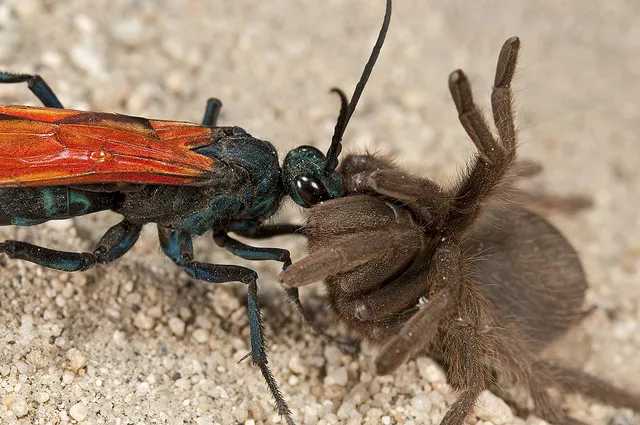
The delivery system of the venom is as impressive as the venom itself. The stinger is connected to venom glands within the wasp’s abdomen, allowing it to inject the paralyzing agent with remarkable accuracy. When the wasp stings a tarantula, the muscles around the venom glands contract, pushing the venom through the stinger and into the spider’s body. The tarantula hawk carefully targets specific nerve centers to ensure the spider is quickly and effectively immobilized. This process is crucial, as a struggling spider would be a danger to the wasp, which is why the accuracy and potency of the venom delivery system are essential. The precise control the wasp exhibits highlights the sophisticated adaptations that have evolved to support its predatory lifestyle.
The Mandibles The Powerful Jaws
Tarantula hawks possess powerful mandibles, or jaws, which are essential tools for various tasks, from manipulating prey to nest-building. These robust mouthparts are strong enough to grasp and carry a tarantula, a task requiring significant strength and control. The mandibles also assist in digging and manipulating materials when constructing nests. The shape and structure of the mandibles are perfectly adapted to their diverse functions, making them an indispensable part of the wasp’s toolkit. They enable the wasp to perform the critical actions necessary for hunting, nesting, and ultimately, the survival of its species.
How Mandibles Work
The mandibles work by a system of powerful muscles attached to the head and thorax, enabling the wasp to generate substantial biting and gripping force. These muscles provide the necessary strength for the wasp to hold onto and transport a tarantula. The mandibles also have a series of teeth-like structures that help with gripping and tearing. These enable the wasp to get a firm hold of its prey, ensuring it can be moved without the risk of escape. The design and mechanics of the mandibles are a prime example of how the tarantula hawk’s anatomy is perfectly tailored to its specific lifestyle.
The Legs and Wings Anatomy of Movement
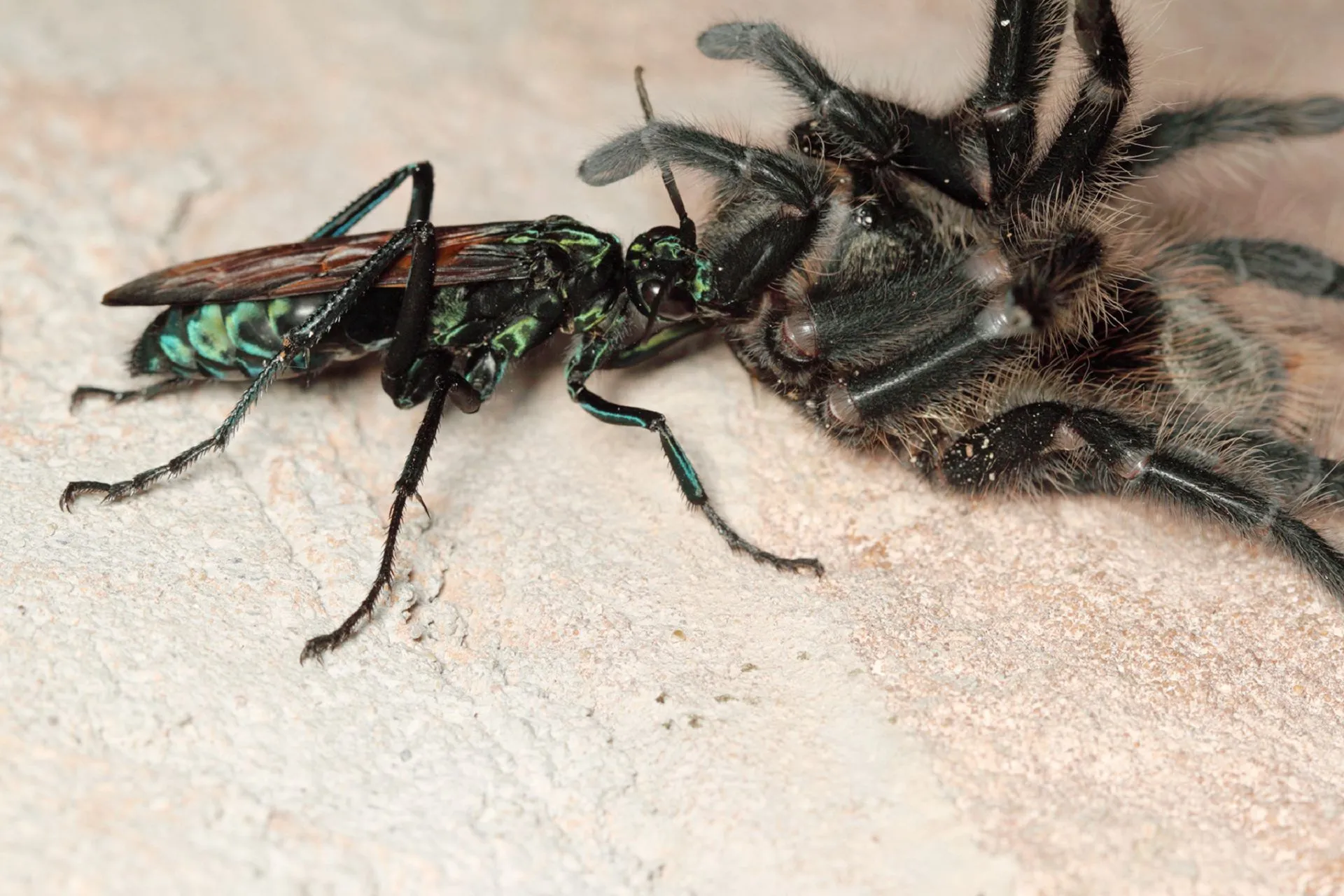
The legs and wings of the tarantula hawk are critical for its mobility, allowing it to hunt, fly, and build nests. The legs provide the strength and grip necessary for navigating diverse terrains, including the rough surfaces where tarantulas live. The wings enable the wasp to fly swiftly, covering long distances in search of prey and nesting sites. The combined functionality of these two body parts contributes to the wasp’s success as a predator. This is a result of evolution optimizing both features for peak performance to survive in the harsh wilderness.
Leg Structure and Function
The legs of the tarantula hawk are segmented, with each section providing specific functionalities. The coxa and trochanter connect the leg to the body, providing stability. The femur, tibia, and tarsus, the lower leg segments, are equipped with spines, claws, and pads, helping the wasp grip surfaces, climb, and dig. These adaptations allow the tarantula hawk to move effectively on the ground. The strong legs enable it to grasp and carry its prey, and the overall leg structure makes it exceptionally agile in its environment.
The Wings The Flight
The wings of the tarantula hawk are transparent, allowing it to fly swiftly. The wings are supported by strong veins and are powered by powerful flight muscles. The wasp is able to fly efficiently at high speeds. The ability to fly long distances is crucial for the tarantula hawk, especially when searching for tarantulas or new nesting sites. The wings are an example of how the tarantula hawk is able to adapt, ensuring that its survival is supported by the features that make it a remarkable species.
Sensory Organs How They Sense the World
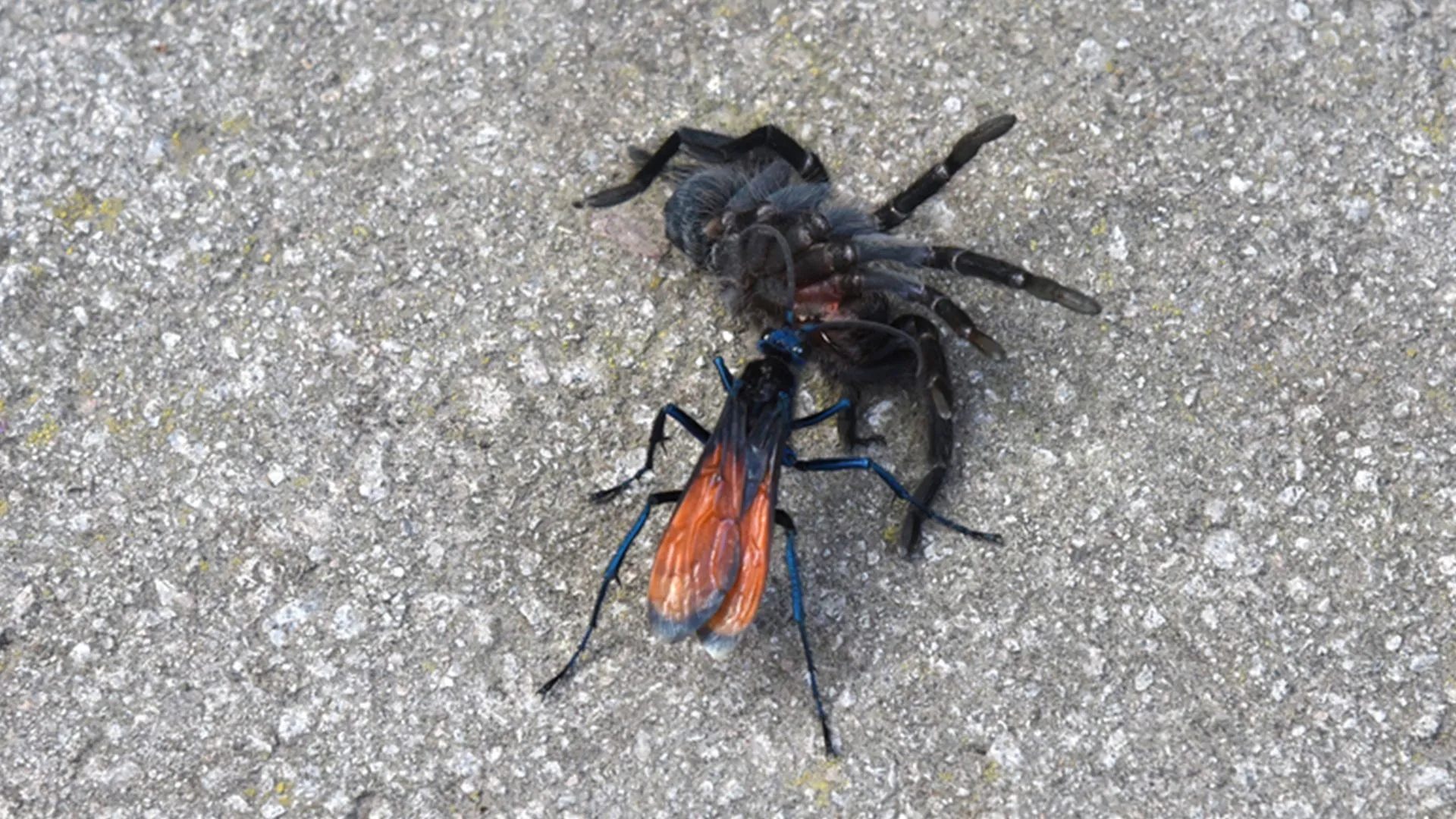
The tarantula hawk relies on highly developed sensory organs to perceive and navigate its environment. These sensory organs include compound eyes, antennae, and other specialized receptors that provide the wasp with vital information about its surroundings. These sensors are particularly important for detecting prey, navigating terrain, and communicating with others of its kind. The effectiveness of these sensors is essential to the wasp’s survival, demonstrating the sophistication of its anatomy and behavior.
Eyes and Vision
The tarantula hawk has compound eyes, which allow it to perceive a wide field of view and detect movement efficiently. These eyes are composed of numerous individual lenses, or ommatidia, each of which captures a portion of the visual field. This type of eye is particularly useful for detecting prey, avoiding predators, and navigating while flying. The visual acuity of the tarantula hawk is exceptional, enabling it to accurately perceive the world around it, which is crucial for its survival.
Antennae and Chemical Detection
The antennae of the tarantula hawk are used for detecting chemical signals, which are vital for locating prey and finding mates. The antennae are covered in specialized sensory receptors that can detect pheromones and other chemical compounds released by tarantulas and other insects. The antennae also help the wasp navigate by sensing changes in air currents and temperature. The combination of these sensory capabilities makes the antennae a critical tool for survival and reproduction.
Reproductive Anatomy for Survival
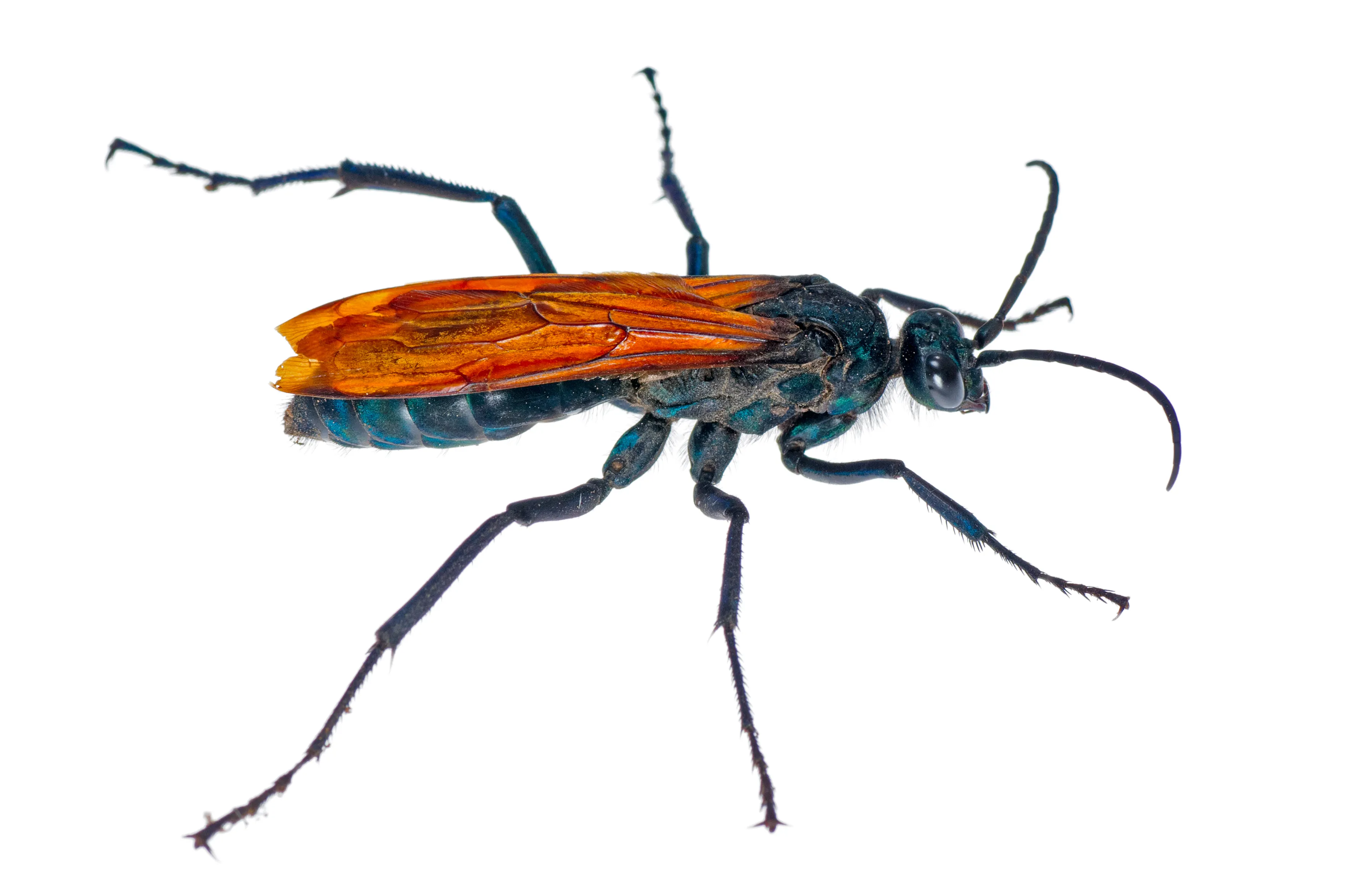
The reproductive anatomy of the tarantula hawk is specifically designed to ensure the continuation of its species. The female wasp is equipped with an ovipositor, which is used to lay eggs on the paralyzed tarantula. The male wasp has specialized structures for mating. The wasps’ life cycle depends on a single egg laid on the abdomen of the tarantula. The female must be successful in hunting and paralyzing the spider. The wasp’s reproductive anatomy underscores the intricate adaptations that support its predatory lifestyle and species survival.
The Abdomen
The abdomen houses the digestive and reproductive organs. The female’s abdomen is larger, accommodating the ovaries and egg-laying structures. The male’s abdomen is generally smaller. The abdomen is also where the venom glands are located, which contribute to the stinging. The abdomen’s structure and functionality are central to the wasp’s reproductive success, enabling the wasp to produce offspring efficiently. The shape and function are specialized and optimized for the lifestyle of the tarantula hawk.
Why is Tarantula Hawk Anatomy Important?
Understanding the tarantula hawk’s anatomy is crucial for appreciating the intricacies of its life and the wonders of the natural world. Each part of the wasp’s body plays a vital role in its survival. By studying the anatomy, we gain insights into the predator-prey relationships and the evolutionary adaptations that enable species to thrive. The tarantula hawk serves as a fascinating subject for ecological studies, offering insights into specialized behaviors and adaptations. It allows us to appreciate the beauty and complexity of nature and highlights the importance of conserving biodiversity. Studying the tarantula hawk’s anatomy gives scientists and enthusiasts alike more insights into the natural world.
